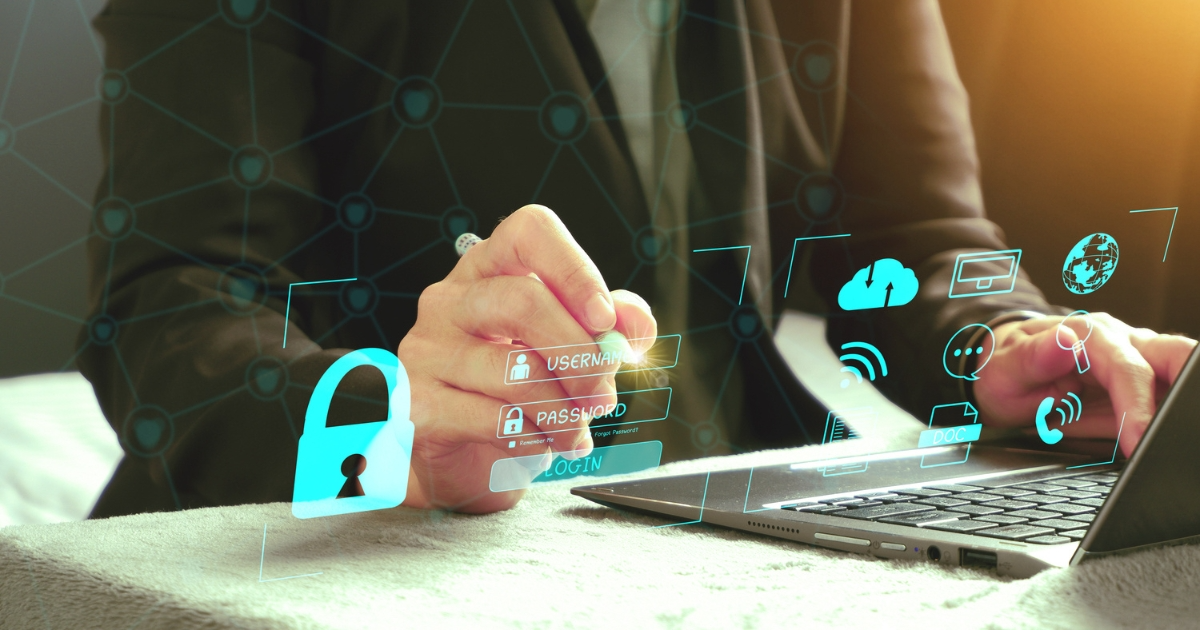Working remotely can be a fantastic experience, but it’s important to ensure the safety of our beloved devices amidst this flexibility. So, how do we keep our devices safe when working from home with flexible hours? Let’s dive in and explore some essential tips and tricks.
First off, protecting your devices from potential cyber threats is crucial. With hackers lurking in the digital realm, it’s essential to have robust cybersecurity practices in place. From using strong passwords to keeping your software updated, we’ll walk you through all the necessary steps to fortify your devices.
But safety isn’t just about cybersecurity; it’s also about protecting your physical devices. Accidents happen, and spills, drops, or theft can leave us in a tough spot. Fear not! We’ve got you covered with smart strategies to prevent mishaps and keep your devices in top-notch condition.
So, whether you’re a student attending remote classes, engaging in remote work for college students, or just someone working from home, join us on this journey to safeguard your devices and enjoy a worry-free remote experience. Get ready to unlock the secrets that will keep your devices safe and sound, no matter where you choose to work.
Protect Your Devices When Working Remote:
1. Keep your software up to date.
2. Use strong, unique passwords.
3. Enable two-factor authentication.
4. Be cautious with public Wi-Fi.
5. Use a reliable VPN for secure connections.
6. Backup your data regularly.
7. Install antivirus and anti-malware software.
8. Avoid clicking on suspicious links or downloading unknown files.
9. Lock your devices when not in use.
10. Educate yourself and stay up to date on the latest security practices.

How to Keep Your Devices Safe When Working Remotely
In today’s digital age, remote work, often associated with various digital jobs, has become increasingly common. Many professionals now have the flexibility to work from anywhere, as long as they have a stable internet connection and the necessary devices. However, the freedom of remote work, especially in digital jobs, also comes with its own set of challenges, particularly when it comes to device security. When working remotely, it is crucial to take steps to keep your devices safe from potential threats and attacks. This article will provide you with essential tips and best practices to ensure the security of your devices while working remotely.
1. Use Strong and Unique Passwords
Passwords are the first line of defense against unauthorized access to your devices and accounts. When working remotely, it is essential to use strong and unique passwords for all your devices and online accounts. Avoid using common passwords like “password123” or “123456” as they are easy to guess. Instead, create complex passwords that include a combination of letters, numbers, and special characters. Additionally, it is recommended to use a password manager to securely store and manage all your passwords.
It is crucial to use a different password for each device and account. Reusing passwords across different platforms increases the risk of a security breach. If one account gets hacked, all your other accounts using the same password could be compromised as well. By using unique passwords, you can mitigate the risk and protect your devices from unauthorized access. Utilizing tools like the last pass password generator can help create strong, unique passwords easily, enhancing your digital security effortlessly.
2. Update Your Devices Regularly
Software updates are essential for device security. Developers regularly release updates that fix known vulnerabilities and address security issues. When working remotely, make sure to keep all your devices, including laptops, tablets, and smartphones, up to date with the latest software releases. Enable automatic updates whenever possible to ensure that you are always protected with the latest security patches.
By regularly updating your devices, you minimize the risk of falling victim to cyber attacks and potential security breaches. These updates often include improvements in system security, bug fixes, and new features. Ignoring updates can leave your devices vulnerable to known attacks, putting your sensitive information at risk.

3. Secure Your Wi-Fi Network
When working remotely, you are likely to rely heavily on your Wi-Fi network. It is crucial to secure your Wi-Fi network to prevent unauthorized access and eavesdropping. Begin by changing the default network name (SSID) and password provided by your internet service provider. Use a strong password consisting of a mix of letters, numbers, and special characters to secure your network.
Consider enabling Wi-Fi encryption such as WPA2 (Wi-Fi Protected Access 2) or WPA3 for enhanced security. Encryption ensures that data transmitted over your network is encrypted and only accessible to authorized users. Additionally, it is advisable to regularly check for firmware updates for your Wi-Fi router and install them to keep your network protected against any known vulnerabilities. If you’re using a fiber modem, ensure it is also up-to-date and configured correctly to maintain the integrity of your high-speed internet connection.
4. Utilize Two-Factor Authentication
Two-factor authentication (2FA) is an additional layer of security that provides an extra level of protection beyond passwords. When enabled, 2FA requires you to provide a second form of verification, such as a one-time password or a fingerprint scan, in addition to your password. This adds an extra layer of security by ensuring that even if someone manages to obtain your password, they would still need access to the second verification method to gain entry.
Many online platforms and services offer 2FA options, including email providers, social media platforms, and cloud storage services. Enable 2FA for all your accounts to enhance the security of your devices when working remotely. It provides an additional barrier against unauthorized access and significantly reduces the risk of account compromise. Additionally, using an authentication portal can streamline the 2FA process, offering a centralized location to manage and access your multi-factor authentication settings efficiently.
5. Be Cautious When Using Public Wi-Fi
While working remotely, you may find yourself in situations where you need to connect to public Wi-Fi networks, such as in coffee shops, airports, or hotels. However, it is essential to exercise caution when using public Wi-Fi as these networks can be vulnerable to attacks.
Avoid accessing sensitive information or performing any financial transactions when connected to public Wi-Fi. Hackers can intercept your data and gain access to your devices and accounts. If you must use public Wi-Fi, consider using a virtual private network (VPN) to encrypt your internet connection and protect your data from prying eyes.
6. Secure Physical Access to Your Devices
Physical security is equally important when it comes to keeping your devices safe while working remotely. Ensure that your devices are always in a secure location when not in use. Lock your laptop, tablet, or smartphone when stepping away from your workstation, even if you are just taking a short break.
If you work in a public space or travel frequently, consider investing in a laptop lock or a physical device lock to prevent theft. These small measures can go a long way in protecting your devices and the sensitive data they contain.
7. Backup Your Data Regularly
Data loss can occur due to various reasons, including hardware failure, accidental deletion, or cyber attacks. When working remotely, it is crucial to regularly backup your data to ensure that important files and documents are secure and accessible. Use cloud storage services or external hard drives to create backups of your files.
Automate the backup process whenever possible to avoid the risk of forgetting to back up important data. In the event of a device compromise or data loss, having a recent backup ensures that you can quickly restore your files and resume work without major disruptions.
Additional Tips for Keeping Your Devices Safe When Working Remotely
1. Enable Firewall Protection
Firewalls act as a protective barrier, monitoring incoming and outgoing network traffic and blocking unauthorized access. Ensure that firewall protection is enabled on all your devices to add an extra layer of security.
2. Use Antivirus Software
Install reputable antivirus software on your devices and keep it up to date. Antivirus software helps detect and remove malware, protecting your devices from potential threats.
3. Avoid Clicking on Suspicious Links or Opening Unknown Attachments
Be vigilant about the emails, messages, and links you encounter while working remotely. Avoid clicking on suspicious links or opening attachments from unknown sources, as they can contain malware or phishing attempts.
4. Educate Yourself on Current Cybersecurity Practices
Stay informed about the latest cybersecurity practices and potential threats. Educate yourself on common phishing techniques, social engineering attacks, and other forms of cybercrime. By being aware of current trends, you can actively protect your devices and personal information.

5. Follow Company Security Policies
If you are working remotely for a company, make sure to adhere to their security policies and guidelines. These policies are designed to ensure a secure working environment, and following them helps protect not only your devices but also the organization’s sensitive data.
Let’s Break It All Down:
Working remotely offers flexibility and convenience, but it also poses security risks to your devices and sensitive information. By implementing the tips mentioned in this article, you can significantly enhance the security of your devices when working remotely. Remember to use strong passwords, update your devices regularly, secure your Wi-Fi network, utilize two-factor authentication, and be cautious when using public Wi-Fi. Additionally, prioritize physical security, regularly backup your data, enable firewall and antivirus protection, and educate yourself on cybersecurity best practices. By following these measures, you can enjoy the benefits of remote work while keeping your devices safe from potential threats.
Key Takeaways: How to keep your devices safe when working remotely
- Use strong and unique passwords for all your devices and accounts.
- Keep your software and operating systems up to date with the latest security patches.
- Enable two-factor authentication for an extra layer of security.
- Be cautious of phishing emails and always think twice before clicking on suspicious links or downloading unknown attachments.
- Regularly back up your important files and data in case of any device loss or cyber attack.
Frequently Asked Questions
Welcome to our Frequently Asked Questions section, where we will address common concerns on how to keep your devices safe when working remotely. With the rise of remote work, it’s important to ensure the security of your devices and data. Let’s dive into some key questions on this topic:
Q: How can I protect my devices from malware and viruses while working remotely?
A: When working remotely, it’s crucial to have robust antivirus software installed on your devices. Make sure to enable automatic updates so that your devices are always protected against the latest malware and viruses. Avoid clicking on suspicious links or downloading software from untrusted sources. Additionally, regularly scan your devices for any potential threats, and be cautious when opening email attachments, even from seemingly legitimate sources.
Another important step is to keep your operating systems and software up to date. This ensures that any vulnerabilities are patched, reducing the risk of malware and viruses infiltrating your devices. Lastly, consider using a Virtual Private Network (VPN) to encrypt your internet connection, providing an extra layer of security when accessing sensitive information.
Q: What are some best practices for creating strong passwords when working remotely?
A: Creating strong and unique passwords is essential to protect your devices and online accounts when working remotely. Avoid using common or easily guessable passwords, such as “password123” or your birthdate. Instead, opt for passwords that include a combination of uppercase and lowercase letters, numbers, and special characters.
Use a different password for each of your accounts to minimize the impact if one account is compromised. Consider using a password manager to securely store and generate strong passwords. Additionally, enable multi-factor authentication (MFA) whenever possible, which adds an extra layer of security by requiring a second verification method, such as a fingerprint or a unique code sent to your mobile device.
Q: How can I protect my data when working remotely on public Wi-Fi networks?
A: When using public Wi-Fi networks, it’s important to take precautions to protect your data from potential eavesdroppers. Avoid accessing sensitive information, such as online banking or private emails, on public networks. If you must access such information, use a Virtual Private Network (VPN) to encrypt your internet connection and ensure your data remains secure.
Additionally, make sure your devices are configured to ask for permission before connecting to new Wi-Fi networks. This helps prevent automatically connecting to malicious networks that may attempt to intercept your data. Lastly, consider using a firewall to add an extra layer of protection against unauthorized access to your devices when connected to public Wi-Fi networks.
Q: How can I keep my devices secure from physical theft?
A: To protect your devices from physical theft, there are several steps you can take. When working remotely, avoid leaving your devices unattended in public areas, such as coffee shops or libraries. If you need to step away, lock your devices or bring them with you.
Consider using physical security measures, such as cable locks or lockable storage containers, to secure your devices when they are at your workstation or during transport. Additionally, enable device tracking or remote wipe features on your devices, which can help locate or delete data in case of theft. Lastly, ensure your devices are password-protected and set up a screen lock timeout to automatically lock your device when not in use.
Q: How can I ensure the security of my online meetings and video conferences?
A: When participating in online meetings and video conferences, it’s important to follow security best practices. Firstly, only share meeting links or access codes with authorized participants to prevent unauthorized access. Avoid posting meeting links publicly or sharing them via unsecured channels.
Use a secure and reputable platform for hosting your meetings, and enable any available security features, such as password protection or waiting rooms to screen participants. If discussing sensitive information, consider encrypting your communications using end-to-end encryption tools or secure messaging apps. Lastly, be mindful of your surroundings and avoid sharing sensitive information or displaying confidential documents during video conferences in public spaces.

Final Thought:

So, here’s what you need to remember to keep your devices safe when working remotely. First, always use strong and unique passwords to protect your accounts. Then, be careful with the links and attachments you click on in emails or messages. Make sure they’re from trusted sources. Keep your devices and software up to date with the latest security patches. And lastly, use a virtual private network (VPN) to secure your internet connection. Stay safe out there!
In conclusion, remember to protect your passwords, be cautious with links and attachments, update your devices and software, and use a VPN. By following these steps, you can keep your devices safe while working remotely.






